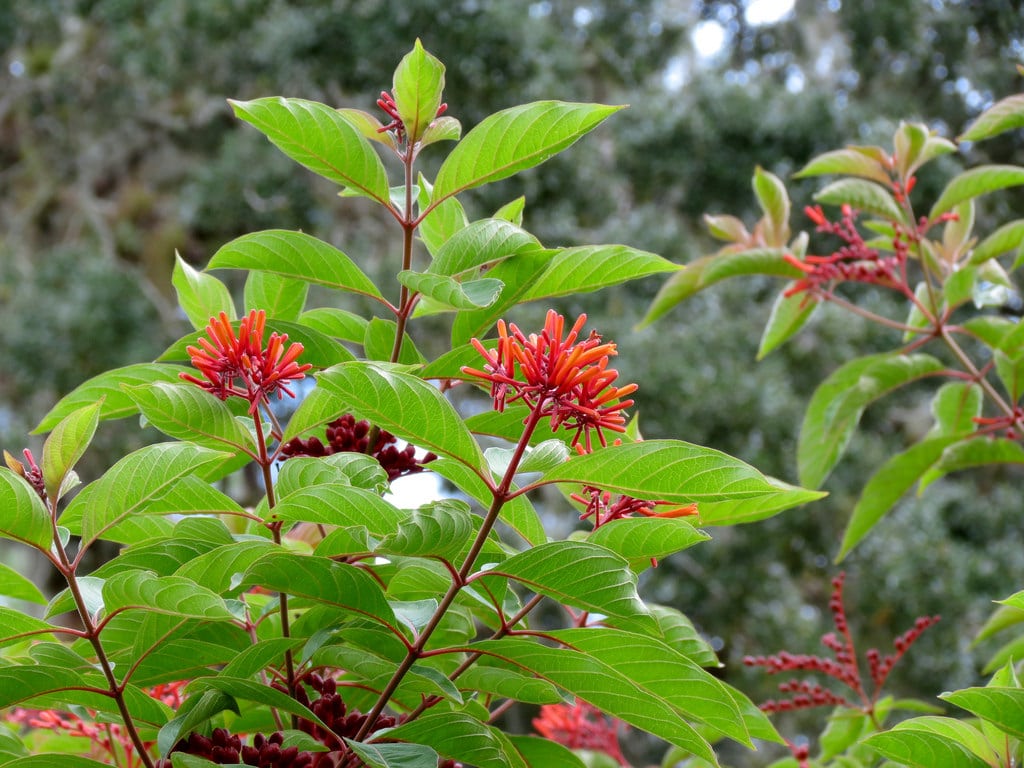Firebush Fertilizer Guide: How Much Fertilizer Does A Firebush Need


Also known as hummingbird bush or scarlet bush, firebush is an attractive, fast-growing shrub, appreciated for its attractive foliage and abundant, bright orange-red blooms. Native to the warm climates of the Mexico, Central and South America, and Florida, firebush is suitable for growing in USDA plant hardiness zones 9 through 11, but you can grow the plant as a shrubby annual if you live in cooler climates. Firebush is easy to grow, requires very little maintenance, and tends to be relatively drought-tolerant once established. How much fertilizer does a firebush need? The answer is very little. Read on to learn three options for feeding firebush.
Fertilizing a Firebush
Need to know when to fertilize a firebush? If your firebush is healthy and doing well, it can live happily without fertilizer. If you think your plant could use a little nutrition, you can feed it a couple of times every year in early spring and again in early summer. If your plant is in need of fertilizing, then you have a few options on how to accomplish this. The first option is to choose a good granular type firebush fertilizer with a ratio such as 3-1-2 or 12-4-8. Alternatively, you can choose to keep things simple by feeding a firebush in spring using a good quality, slow-release fertilizer. As a third choice, firebush fertilizer can simply consist of a handful of bone meal applied in spring. Sprinkle the bone meal on the soil around the bush, at least 3 or 4 inches (7.5-10 cm.) from the trunk. Bone meal, rich in phosphorus and calcium, will support healthy blooming. Water the bone meal into the soil. Regardless of the option you choose, be sure to water thoroughly immediately after feeding a firebush. A deep watering ensures the fertilizer reaches the roots evenly and also prevents the substance from scorching the plant.
Sign up for the Gardening Know How newsletter today and receive a free copy of our e-book "How to Grow Delicious Tomatoes".

A Credentialed Garden Writer, Mary H. Dyer was with Gardening Know How in the very beginning, publishing articles as early as 2007.